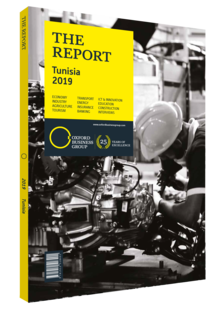Moncef Harrabi, CEO, Tunisian Company for Electricity and Gas: Interview

Interview: Moncef Harrabi
In what ways is the country’s electricity and gas infrastructure being developed?
MONCEF HARRABI: Tunisia has achieved electricity coverage of 99.99% and we now want to ensure the same level of distribution for natural gas. At the moment we have a project to develop a pipeline in the industrial and tourist cities of Djerba, Tataouine and Zarzis, given that natural gas plays an important role in wealth creation. Without foreign investment this infrastructure cannot be developed. Therefore, we have received funding from European and Arab donors such as the European Bank for Reconstruction and Development, and the Islamic Development Bank. Furthermore, two projects with a total capacity of 1100 MW are under way: the first is a combined cycle gas turbine in Radès and the second is two open cycle turbine gas in Borj El Amri/Mornaguia. It is crucial for us to implement these projects before the summer of 2019 in order to meet the energy spike caused by air conditioning usage. In 2017 we experienced a record-breaking energy spike of 4025 MW and consumption is expected to continue increasing in the following years. We are also seeking to set up a new combined cycle power station in Skhira, with an expected energy capacity of 500 MW and $450m worth of investments.
How are renewable energy sources expected to diversify Tunisia’s supply capacities?
HARRABI: The country aims to meet 30% of its electricity needs from renewables by 2030. It is therefore necessary to anticipate and prepare the infrastructure needed to meet this objective. We are currently developing a pumped storage project in northern Tunisia to further integrate renewable energies. Without increased storage capacity and stronger, more developed interconnections with neighbouring countries, Tunisia would not achieve its goals. Therefore, we launched a 200-km long, high-voltage underwater transmission line project in partnership with Italy, which the World Bank. We are also seeking funding for 400-KV power lines and the upgrade of the network to carry electricity to the main production sites of the country. In addition, a tender was recently launched for a total renewable capacity of 1000 MW from independent power producers under the concession regime.
All these projects are needed to reduce the Tunisia’s energy bills, particularly as we are a net importer of natural gas. The country’s energy deficit currently stands at 50% and rises to 60% for gas. However, the Southern Tunisian Gas Project, known as the Nawara Project, is expected to almost double national gas production capacity from 30,000 barrels of oil equivalent per day to 65,000. The Nawara Project should be operational by October 2019 and cover 50% of gas needs, thereby reducing energy deficit.
What measures are being implemented to improve energy efficiency and increase liquidity?
HARRABI: We are currently developing a programme with the World Bank in order to improve our performance when it comes to fighting fraud and reducing money owed. As a result, we have now recovered $500m from the public and private sectors. Furthermore, a study is under way to identify and address technical and commercial power losses being made. We are employing the most innovative technologies in order to generate electricity at the lowest possible cost, especially with respect to combined cycles that can have yields of up to 60%.
Moreover, the first phase of a smart grid project has been initiated in the region of Sfax, requiring the installation of 430,000 smart meters, covering 10% of Tunisian customers at a national level. The second phase of this project will be to install smart meters to cover the remaining 90% by 2027. The main objective is to improve the quality of the services offered to customers, in order to better respond to fluctuations in electricity demand and to keep down energy bills.
You have reached the limit of premium articles you can view for free.
Choose from the options below to purchase print or digital editions of our Reports. You can also purchase a website subscription giving you unlimited access to all of our Reports online for 12 months.
If you have already purchased this Report or have a website subscription, please login to continue.

